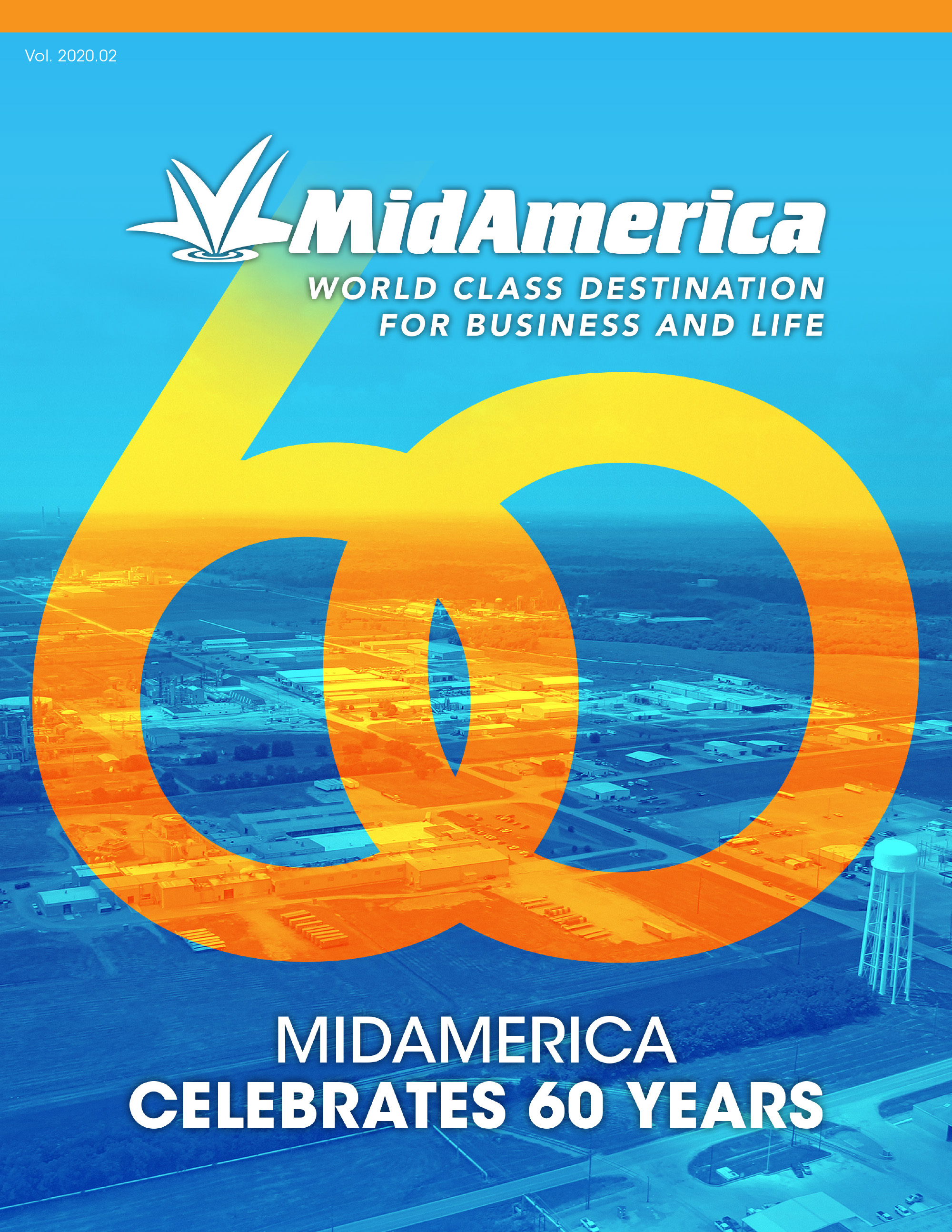Our History
Answering the Nation’s call
MidAmerica’s critical role in WWII
By the time the United States formally entered World War II in December 1941, war materials production quickly became a national priority.
The U.S. Department of Defense acquired 16,000 acres of land between the towns of Pryor and Chouteau and built a munition plant to support the Nation’s WWII efforts.
Pryor was selected as it could provide hundreds of thousands of gallons of water and requisite hydroelectric power and offered a sizeable work force.
Massive munitions factories and powder plants were built on the land to supply materials to aid America’s defense of freedom during World War II. The City of Pryor grew from 2,500 to more than 14,000 workers with 10,000 working within the “powder plant.” The massive land space separated the black powder within 57 concrete, “bee-hive” style igloo bunkers and four Quonset-style bunkers.
At the end of WWII, War Assets Administration decommissioned the factory and land. Today, 13 of the historic bunkers remain on the property.
MidAmerica’s rich history of re-invention and transformation
In 1960, Oklahoma’s Federal Delegation, along with state leaders, decided to form a public trust authority through an agreement between the State, the Federal Government and the City of Pryor.
On December 30, 1960, the property was purchased for $1.7 million and the public trust, Oklahoma Ordance Works Authority (OOWA), was formed.
The mission of OOWA remains the same today: to directly benefit the State of Oklahoma and its citizens by growing new, high-value jobs and by increasing regional tax bases.
Oklahoma’s legislators had the foresight to ensure there is continuity of leadership through the trustees and management. OOWA remains independent and free from bureaucratic influence, and maintains a sustainable, ongoing source of revenue.
Within two years, the first industrial employer opened in 1962 as the Utah Tool Company. The company later became known as Pryor Automatic Tool and, today, QMI, Inc., manufactures precision-machined parts in the same building originally occupied by Utah Tool 62 years ago.
In 1980, OOWA begins operating as MidAmerica Industrial Park
Decades of visionary leaders at the Oklahoma State Capitol and on MidAmerica’s Board of Trustees have all contributed to its 64 years of success.
Today, MidAmerica remains as the
- eighth largest industrial park of its kind in the world
- the third largest in the United States
- and the largest mega site prepared and available in Oklahoma
MidAmerica Industrial Park’s rich history comes full circle and the reasons considered during its site-selection process still hold true today.
- MidAmerica is free from debt and the Board of Trustees make conservative, strategic investments to make the Park’s infrastructure more durable and more competitive in order to meet the high demands of current and future industries.
- MidAmerica’s on-site partner, GRDA, continues to invest millions to grow and diversify its portfolio of power generation making it a true competitive advantage for employers.
- MidAmerica owns and operates Oklahoma’s third largest water and wastewater treatment plants. We are currently investing even more to ensure the Park can be nimble and responsive to a new employers’ growth and infrastructure needs.
MidAmerica’s success in recruiting and retaining more than 80 employers at MidAmerica, and more than 4,500 employees, means the executive team is continuously seeking ways to improve the Park and its assets.
Experts will tell you, the “sense of place” is now more important than ever as a key to success. Demographics of all ages are drawn to areas that provide the amenities of a big city, but with the affordability and convenience of a community.
In today’s economic development market, the evolution of an industrial park into a multi-faceted employment center is a cornerstone to inclusive growth in jobs and people. Like any business, an organization must continuously evolve, not only to remain relevant, but also to surpass the competition.


